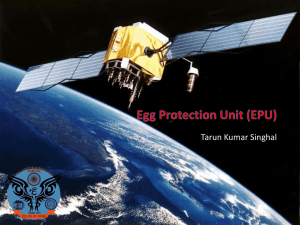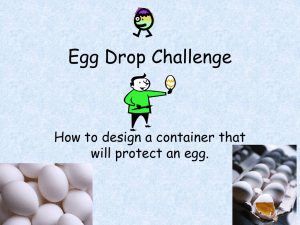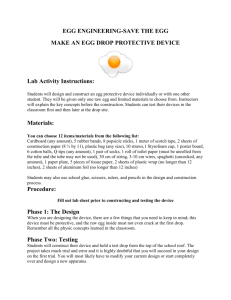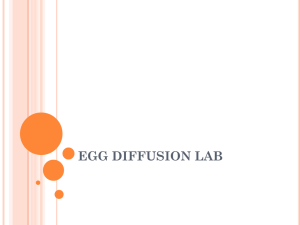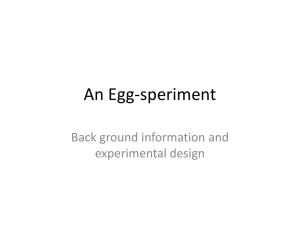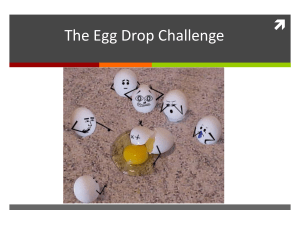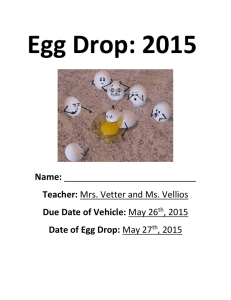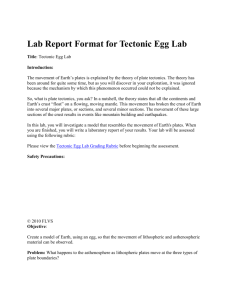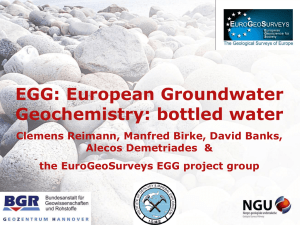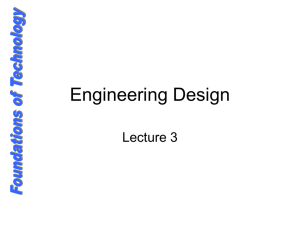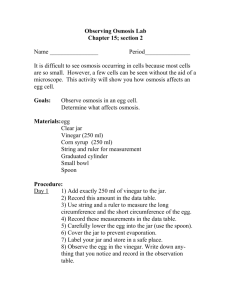The Great Egg Drop Lab PowerPoint - Ivy Tech -
advertisement
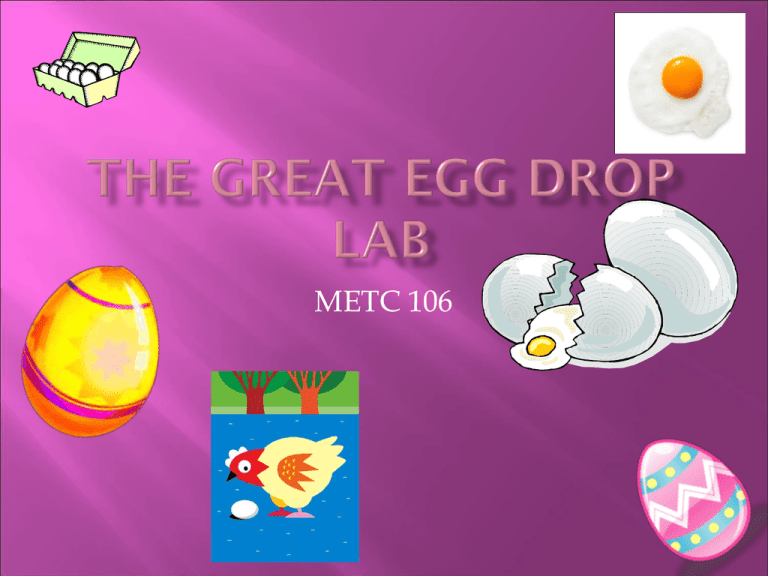
METC 106 METC 106 THE GREAT EGG DROP LAB Goal To construct a structure capable of protecting an egg dropped from a significant height. Materials/Group Scale to weigh each device in grams 1 - Piece of foam board, 6 inches X 6 inches 3 - Plastic straws 4 - small paper clips 4 - Giant paper clips 1 - Piece of string, 5 feet long 1 small plastic cup 2 - Rubber bands 1 plastic egg 5-Craft/popsicle sticks 2 plastic grocery bags Scotch tape Stop watch 1 egg per group (egg cannot be changed in any way from its raw state) 1 small sandwich bag (wrap the real egg in to contain any breaks) 1 copy of the ASME Egg Drop Contest Rules Procedure Students will be divided into groups of 3-4. Students will discuss and come up with a design. Materials must be chosen from the list, but not all materials need to be used. Remember, the goal is to design a device with the least number of parts that will protect the egg. Students will be provided with materials to build their design, using the plastic eggs to simulate the real eggs. Students may test their prototype in the classroom and refine the design. Perform the actual test. Each device will be weighed without the egg and recorded. The number of parts used will be counted and recorded. Record the time it takes for the egg to drop to the ground on the data sheet. Record the drop zone that each device lands in and if the egg cracks. Report Each student will submit a well-written laboratory report including (Pond p.216): •The objective •A list of equipment used •The theory, or principle, examined •The procedure used to successfully complete the experiment •A presentation of the data collected •Sample calculations used to arrive at a conclusion •Presentation of the results •Conclusions and recommendations Discuss your design methodology (how the project was supposed to work) and a performance analysis (how the project actually worked). The analysis should include an approximation of the average velocity of the egg using the simple equation velocity = distance/time. Include appropriate units with your result (miles/hour or inch/minute or ….). Of course, the egg begins with a velocity of zero and the velocity increases as the egg reaches the ground. THE DROP ZONE CONSISTS OF 3 CONCENTRIC RINGS…2 FT, 4 FT, 6 FT DIAMETERS. CAN YOUR GROUP HIT THE TARGET?





